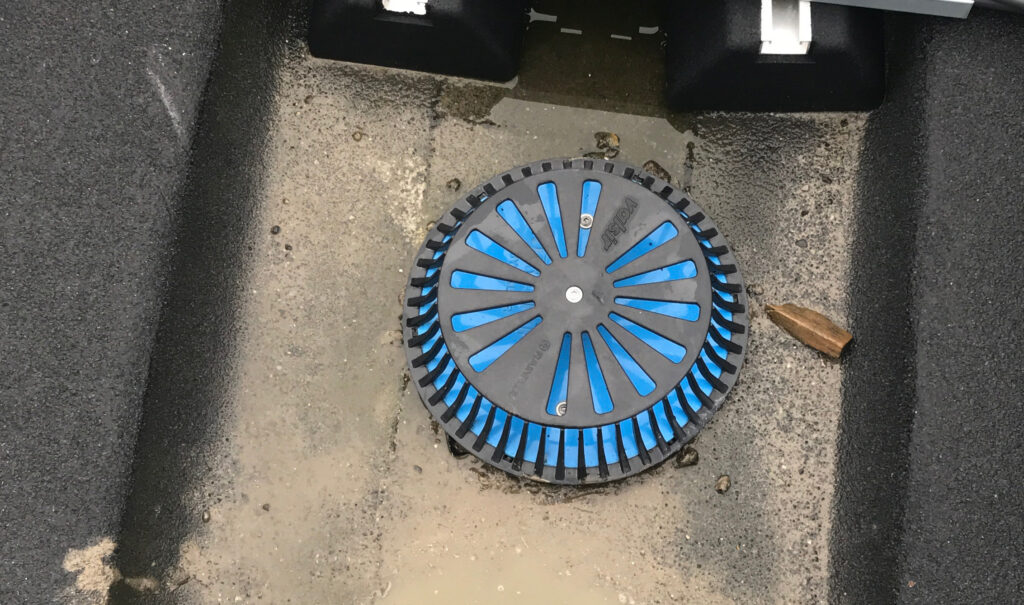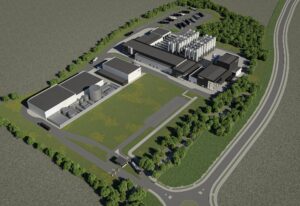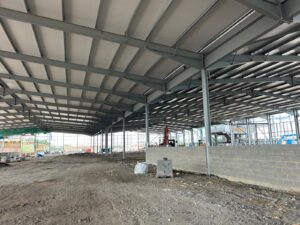Debunking the Misconception:
Are Siphonic Drainage Systems More Prone to Blockages?
A misconception about siphonic drainage systems is that they are more prone to blockages than traditional gravity systems. This article aims to dispel this myth and clarify for architects and specifiers who may hesitate to implement siphonic drainage systems due to concerns about blockages in outlets or pipes.
1) The siphonic action makes blockages LESS likely
Siphonic drainage systems are actually less likely to experience blockages than gravity systems. Although siphonic pipework is generally smaller in diameter and runs at a zero gradient, these systems are uniquely self-cleansing.
Here’s how: The high-velocity water flow through a siphonic system effectively flushes out any stray debris that may have passed through the leaf guard and anti-vortex plate on the outlet. This effective debris removal is why rodding eyes are not required on siphonic systems, except at the connection point to a gravity pop-up in the ground.
Conversely, due to their increased susceptibility to blockages, gravity systems require more rodding eyes at regular locations, such as at direction changes.
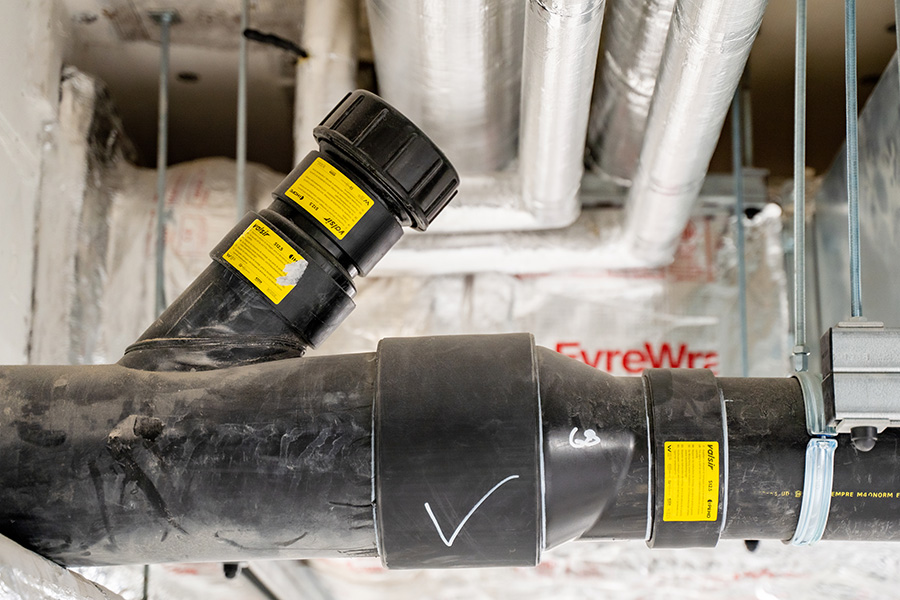
2) Regular Maintenance is Essential for all Rainwater Systems
Despite the self-cleaning nature of siphonic systems, regular maintenance remains crucial for any rainwater drainage system, whether siphonic or gravity based.
All roof drainage outlets, including both siphonic and gravity systems, incorporate leaf guards to prevent excessive debris from entering the pipework. However, debris buildup is natural, particularly for green roofs, heavy industrial areas or buildings in areas with trees.
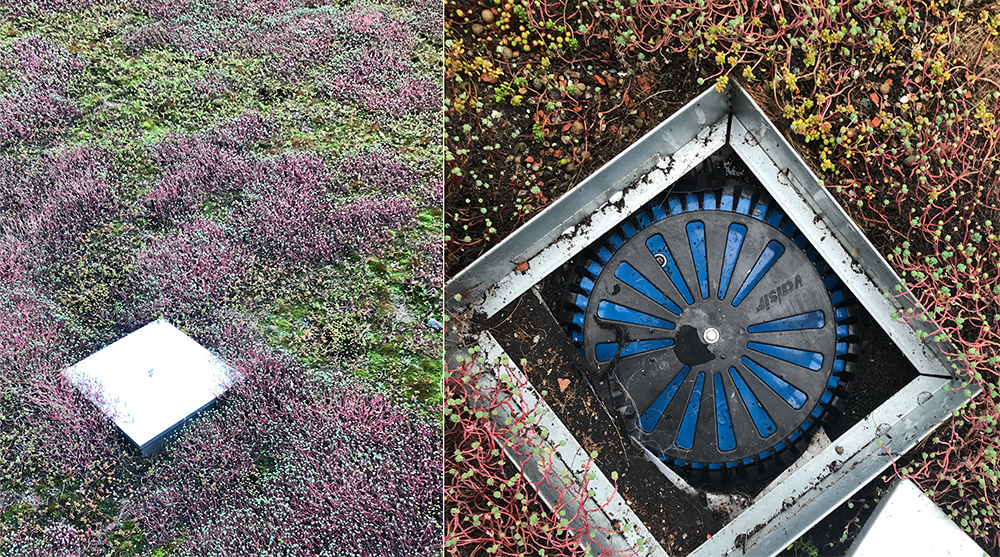
How often outlets need to be checked and maintained will be determined in the first year, as outlined in BS EN 12056-3:2000 & BS 8490:2007, which recommends inspecting the drainage system four times during the first year to establish a maintenance schedule specific to the building and its locale. For more information on maintenance, check out this article or contact us for further details.
3) During Construction - Don't Clean Up by Pushing Rubbish and Debris Down the Rainwater Pipework
The most common time for blockages to occur in rainwater pipework is during construction. This is easily preventable but happens in both siphonic and gravity rainwater systems when poor cleaning practices are allowed.
-
Keep The Outlet CoveredDuring construction siphonic outlets are capped with a temporary cover which allows rainwater to drain through the outlet but keeps out debris. These MUST be kept in place until the permanent anti-vortex plate and leaf guard are put in position.
-
Prevent Poor Roof Cleaning PracticesRainwater drainage pipes are not rubbish disposal chutes! Contractors must ensure that roofs are not “cleaned” by removing caps and pushing rubbish and debris into the system. This is the number one cause of blockage in any drainage system.
-
Keep Components in PlaceWhen construction is complete it’s imperative that all components are left in position. Siphonic drainage is a high performance system that only works with the anti-vortex plate is in position, ensuring no air, or excess debris, can enter the system.

In conclusion, siphonic drainage systems are, in fact, less prone to blockages compared to their gravity counterparts. However, it is important that these high-performance systems are not used as rubbish disposal chutes, particularly during construction. Post construction regular maintenance remains essential for both types of systems to ensure optimal performance. If you have any questions or concerns regarding siphonic drainage systems, please get in touch or consider attending our siphonic drainage CPD for an in-depth understanding of siphonic drainage benefits and applications.

